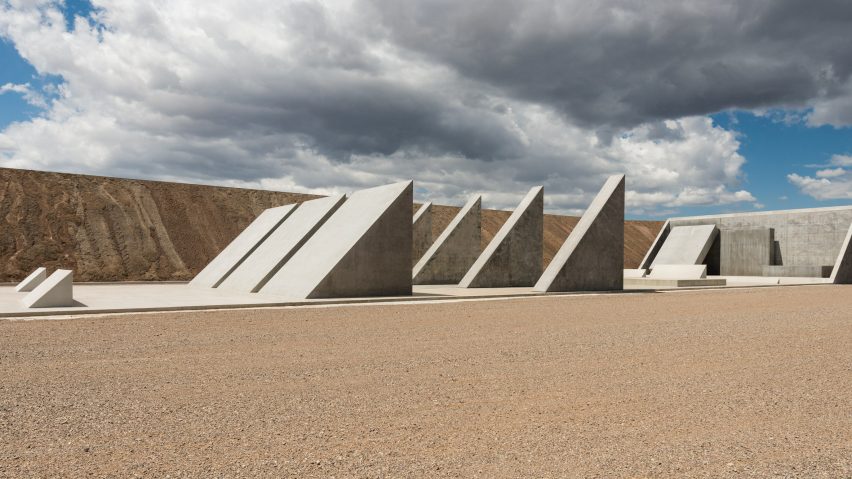American artist Michael Heizer has completed City, a monumental sculpture formed of earthen mounds, geoglyphs and concrete pyramids deep in the Nevada desert that took more than 50 years to construct.
Measuring around 1.5 miles long and 0.5 miles wide (2.4 by 0.8 kilometres), City consists of several structures resembling ancient geometric temples that Heizer began constructing in 1970 with the help of materials found on the site.
"City is intentionally reminiscent of many ancient ceremonial constructions through its complexity and size, but its form is suggestive of the central hub or nucleus of a modern city," said the Triple Aught Foundation, a non-profit that was created to fund the project in 1988 and is now in charge of its preservation.
The work includes 45°, 90°, 180° – a series of jagged pyramidal forms constructed from concrete and set in a depression. Built on a concrete base, the pyramids lead to a triangular box filled with massive concrete slabs.
Other aspects of the artwork include Complex One, a large mound of piled dirt lined with quadrilateral concrete retaining walls on both sides.
Throughout the site, long lines of a concrete snake across the desert floor, filled in with different granulations of sand to form geoglyphs – large-scale motifs carved out of the natural landscape that are designed to be seen from above.
Mounds of rocks and sand and other depressions add to the topography of the site.
"The City is as monumental as an ancient pre-Columbian complex or Egyptian ceremonial structures and is as starkly uncompromising as the high desert of Nevada's Basin and Range National Monument, the environment that is its setting and substance," said the Triple Aught Foundation.
Structures within the work were built largely from clay, sand and rock found on site.
Materials were collected through "minimally invasive means, so that the native plants and wildlife may remain undisturbed", according to the Triple Aught Foundation.
Heizer originally began purchasing parcels of land for the work in the 1970s, fronting the initial funding himself.
The environment for the piece is a section of barren desert in Nevada far from any settlement.
"The Heizer family has inhabited Nevada since the 1800s and the City location was partly chosen by the artist because of its remoteness," said the foundation.
"Surrounded by primitive wilderness, it is near the bases of several mountain ranges of nearly 12,000 feet in elevation and near the White River narrows, which was active during the post-Pleistocene era."
The City is now part of the Basin and Range National Monument, a federally protected park created by president Barack Obama in 2015, in part to protect the in-progress work.
Various other organisations have contributed to the financing and organisation of the sculpture including the Glenstone Museum, Los Angeles County Museum of Art and the Museum of Modern Art in New York.
Michael Heizer was born in California and has completed a number of other outdoor sculptural works throughout the American Southwest.
Other notable examples of monumental art come from the late artist duo Christo and Jeanne-Claude, who wrapped Paris's Arc de Triomphe in silvery fabric and floated three kilometres of saffron-coloured pathways on top of Italy's Lake Iseo.
All photography is courtesy of Michael Heizer and the Triple Aught Foundation.

